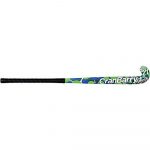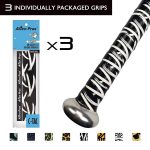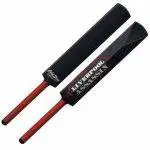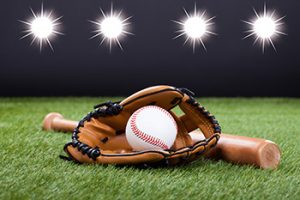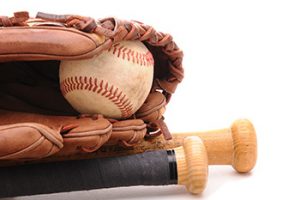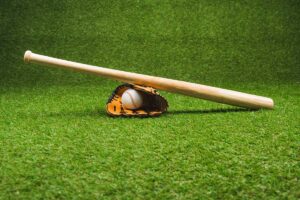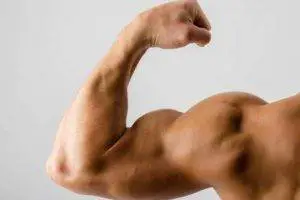No matter the league you play in or your level of experience, the one thing you cannot afford to be wrong about is your baseball glove size. That extra inch you want to ignore could make all the difference in your next game.
Your performance is going to be decided in part by how comfortable the glove feels in your hand. That’s why you should set time aside to learn about the basics of baseball glove sizes. Think of them as shoes; each is unique not just when it comes to sizes but also design and construction.
A combination of factors, from age to player position, will play a huge role in helping you narrow down the most suitable option. Of course, you could ignore all that and just shop for a glove you feel is right for you, but that’s a huge risk to take.
Besides, the market is saturated with all manner of baseball gloves, and sorting through them can be overwhelming, especially if you have no understanding of what you are looking for.
I thought it would be great if I made this entire process easier for you by taking you through the simple steps you can follow to find the right fit. Later on, I also answer the most critical questions about this topic.
Let’s get started.
Step 1: Know Your Gloves
Understanding the glove anatomy is a perfect place to start this journey. It’s only when you know what makes up a glove that you will be able to find the best baseball glove for your individual needs and preferences.
Four major parts come together to make up a baseball glove, and we’ll look at each briefly:
- Fingers — Just as the word suggests, this is where your fingers fit. For better control, some baseball gloves lock the index and middle fingers together. This is actually way better as opposed to what most players do, which is stick these two fingers outside of the baseball glove. Some players also prefer to place two fingers in the pinky hole as opposed to one to make the glove close differently.
- Webbing — Also known as the web, this is the part that connects the glove’s thumb to the fingers. Its role is to help the player catch the ball and keep it in their mitt. Without it, it would be tough catching hits such as line drives and fly balls. Webbings come in so many styles and forms to match different player preferences.
- Heel — Your baseball glove’s heel is the padded area below the palm. When the glove is new, this part will be the stiffest. The padding on it protects the upper wrist and lower part of the player’s hand.
- Palm/Pocket — This is the surface area at the center of the baseball gloves. It’s padded to minimize stings on the palm of your hand when you catch the ball directly from this area. (If you are curious to learn how to catch a baseball with two hands, follow the link.)
- Adjusters — Not many gloves have adjusters, except those meant for youth baseball. They help you adjust your glove’s fit to match different conditions.
When you go shopping, keep all these factors in mind (in addition to other aspects I’ll mention later in this article). Next, let’s see how to measure a baseball glove.
Step 2: Look For The Perfect Baseball Glove Size
You are going to need a complete understanding of how to measure a baseball glove before you settle down on a final option. While shopping, you will realize that the size is listed on the pinky finger or thumb of the glove, usually in inches. Here’s how you go about measuring it.
First of all, make sure you have a tape measure or any other ideal measuring instrument that is calibrated in inches. Next, measure the distance between the tip of the glove’s index finger and the center of the heel (top to bottom through the palm area). It’s as simple as that — you have the glove size.
Equally important to note is that the distance is measured differently for the catcher’s mitt. You have to place your tap along its edges to get the circumference. The reason for this is because the catcher needs more surface area so as to double the chances of catching the ball.
Even better, there’s a chart to help you narrow down your options to the most fitting glove. It shows you how to measure baseball glove size by age and player position.
Baseball Glove Size Chart
| Age | Infield | Outfield | Catcher | First Base | Second Base | Third Base | Pitcher |
|---|---|---|---|---|---|---|---|
| 7 and under | 9-10.5” | 9-10.5” | NA | 11.5” | 9-10.5” | 9-10.5” | 9-10.5” |
| 8-10 | 10.75- 11.5” | 10-12” | 31-31.5” | 11.5-12” | 10.5-11.25” | 10.5-11.5” | 10.5-11.5” |
| 11-13 | 11-11.75” | 11.75-12.5” | 31-32.5” | 11.5 – 12.5” | 11-11.5” | 11-11.75” | 11.5-12” |
| 14 and above | 11-12” | 12-13” | 32-34.5” | 12.5- 13” | 11.25-11.75” | 11.5-12” | 11.5-12.5” |
Step 3: Go Shopping
Now that you have a better understanding of how to measure a baseball glove size, it’s time to go shopping. But as mentioned earlier, there’s a lot more you will want to look at in relation to size. I’ll take a look at each aspect briefly:
Pocket Size
Your position of play decides what pocket size is right for you. For example, a larger pocket would be perfect for an outfielder as it allows them to take hold of fly balls without any difficulties. A shallower pocket, on the other hand, fits infielders as it lets them get the baseball out of their glove faster.
Padding
Padding also relies on your position of play. Catcher’s mitts, for instance, have extra padding to minimize stings resulting from throws. First and third base positions use gloves with more padding as well. However, pitcher, infielder, and outfielder positions don’t use a lot of padding for different reasons.
Material
Baseball gloves are available in different materials, ranging from leather, which is the most common, to mesh, synthetic, and treated leather just to name a few. Leather is a favorite to many players because of its comfort and durability. Mesh gloves are loved for being lighter, synthetic gloves are loved for being inexpensive, and treated leather is known for the easy break-in.
Webbing
Earlier on, I mentioned that webbings come in so many styles and forms. You will realize that most infielder’s gloves use a looser webbing. This gives the player much better control, allowing them to get the ball out faster.
Some outfielder’s gloves make use of open webs, the goal being to let the player have proper visibility while shielding them from sunlight. They are fit for positions such as first base, outfield, and middle infielder.
Other types of webbing include I-web, H-web, closed/basket web, trapeze web, modified trapeze web, and two-piece closed web.
Something else you will want to note is that gloves are also developed with your field position in mind, with multiple varieties available for your specific position of play. These include catcher’s mitts, first baseman’s gloves, pitcher’s gloves, infield gloves, and outfield gloves.
As soon as you purchase what you believe to be the perfect glove for you or a younger player, remember to break it in in the right way.
Frequently Asked Questions
What Do Baseball Gloves Do?
A baseball glove or mitt is a padded handwear worn by baseball players, particularly those of the defending team, to help them secure and field balls hit by a batter or thrown at them by a teammate.
A player is supposed to fit their hand snugly inside the glove so as to open and close it with ease while catching a ball. As mentioned earlier, there are various types of gloves designed for different player positions, each performing a unique role that complements the position.
What Size Baseball Glove Do I Need?
The first step you should take in your search for the perfectly-sized baseball glove is finding out the options that are right for your age as well as hand size. Take into consideration your player position too.
You will notice the sizes for baseball gloves range from 9 to 13 inches based on the factors mentioned. For catcher’s mitts, the range is 31 inches to 34.5 inches.
What Is The Right Size Baseball Glove?
While it is important that you choose the right size, there’s more you have to consider in ensuring the gloves fit you well, like the length of your index finger. Glove makers actually use that to determine glove length.
Normally, the index finger is shorter than the middle finger, with the average distance between their heights being 0.25 inches. It is recommended that you get yourself gloves that are one size down if your index finger length varies by 0.25 inches.
Also, make sure the glove:
- Feels comfortable
- Fits snugly around your fingertips
- Can adjust so that it fits snugly on your palm and fingers
A glove that fulfills all these requirements is the right fit for you.
Why Do Baseball Players Put One Finger Outside Their Glove?
Baseball players who put one finger outside their glove do so to give it an added layer of padding that serves to protect the hand while they catch a line drive.
Normally, the index finger sits right behind the area where the ball slams into the baseball glove. As you can guess, the risk of injury is higher when the finger is left exposed as opposed to being placed outside of the glove.
Last Word On How To Size A Baseball Glove
Hopefully, this guide has been helpful to you in your effort to find the right glove size. As you can already tell, nearly every part of the glove’s anatomy matters in this selection process. It’s only when you know every component correctly that you can be able to take the right measurements and settle on the most suitable option.
Remember to:
- Get yourself a good measuring instrument
- Follow each of the steps discussed in the guide
- Use the baseball glove size chart above in your selection
Don’t forget to factor in the rest of the elements that matter in this selection process.
All the best!




